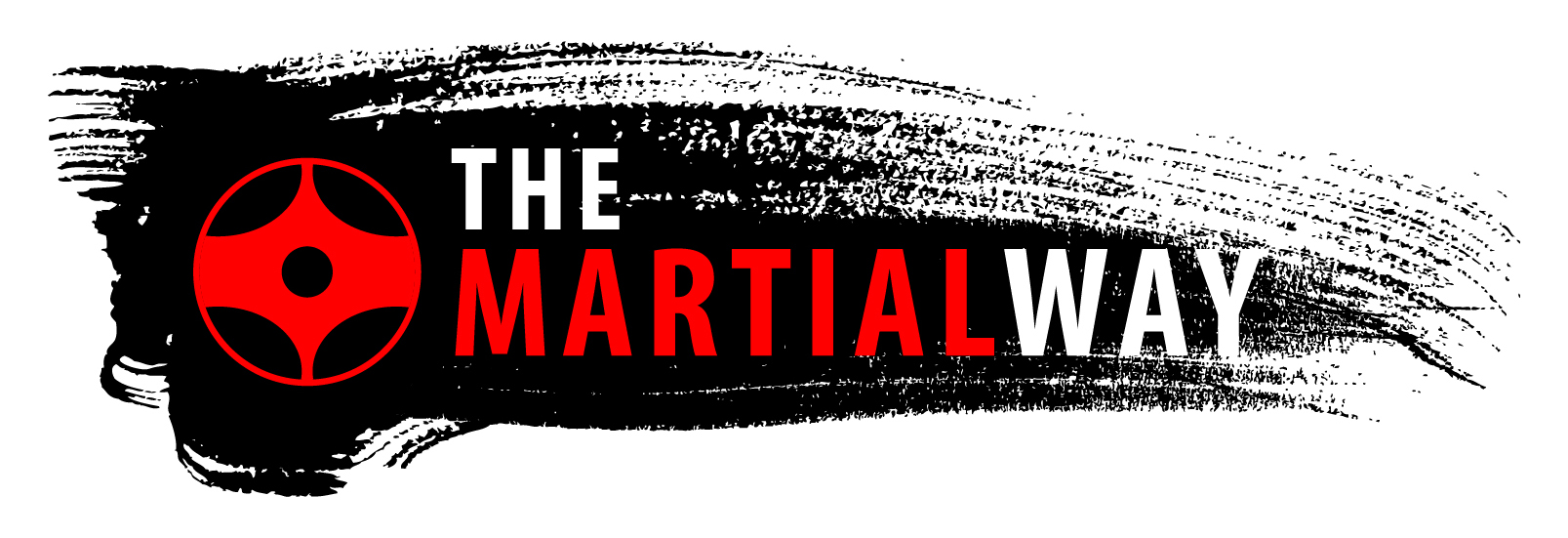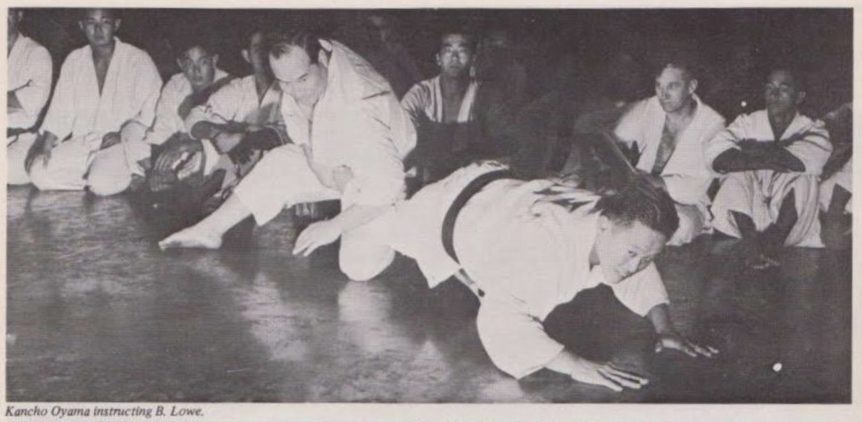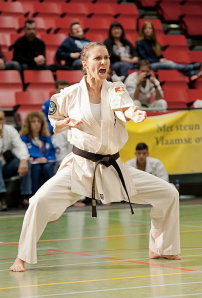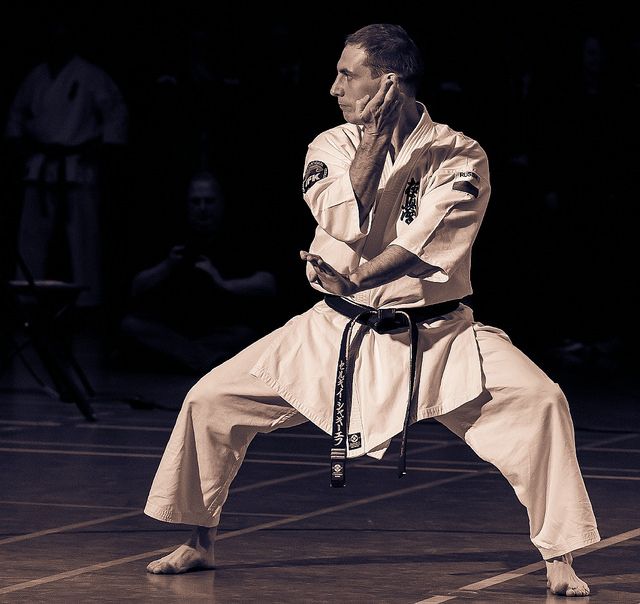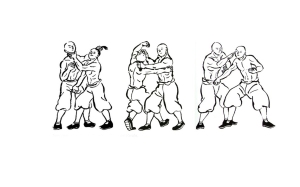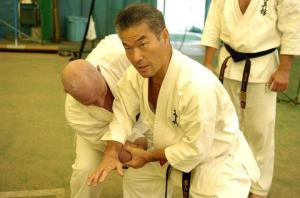Last night’s class at Contact Kicks concentrated on kata, with the class divided by kyu levels. It made me a happy camper, as kata practice is one of my most loved components of Karate, along with application, or bunkai.
At first everyone in the class, from the lowest rank to the black belts began together, starting with Taikyoku Sono Ichi, and continuing on. Eventually we got to a point where the lower ranks, like myself, didn’t know the other kata, so we began to separate off.
Fogarasi Sensei told us to try our best to keep up the higher belts, and even if we didn’t know, or couldn’t perform, the kata at a confident level, we should still try to keep up. He made the perfect analogy to sculpture. When an artist begins a sculpture he or she doesn’t start with the eye and finish and perfect the eye before moving to another part of the sculpture. No, the artist begins with an outline of the entire piece and slowly chips away revealing the sculpture that lies within the stone.
So it should be with kata. You can learn and get a rough idea of the entire kata in movements, and then begin to tweak and perfect each movement, revealing the art that lies within the kata.

Tai Chi sculpture by Yu Ming
Once we broke off Fogarasi Sensei worked with the lower kyu’s. It was great to get his attention like that, as his technique is amazing, so to be able to watch closely while getting instruction was invaluable.
Sensei then made the comment that we should look at our kata like “Zeiss”. Carl Zeiss was a German maker of optical instruments commonly known for the company he founded, Carl Zeiss Jena (now: Carl Zeiss AG). Zeiss’ contributions to lens manufacturing are legendary and have aided the modern production of lenses. It is a common thing in Europe when wanting precision and quality. – it must be Zeiss !
So, throughout our instruction Sensei continued the analogy and would focus on various aspects of a kata, like that of a microscope and that it must be Zeiss! Sensei has amazing attention for detail. You might not think he is even looking in your direction and you hear “jodan not chudan”! Osu!
Every kata tells a story, a history of the various systems. There is a divide within karate over kata versus kumite. They are two different things, and both can influence Bunkai. Bunkai is the marriage of Kata and Kumite,
Bunkai literally means to “separate” or “break down” (“bun”) and “understand” (“kai”). Kata bunkai means to break down the movements of the kata and study their practical applications.
Within Kyokushin, there seems to be a loss of the connection between kata and kumite, as it’s more focused towards the sport end of the karate spectrum, understandably.
However, kata was never meant to “fight” with. Okinawan Karate was founded on self-defense. Karate Ni Sente Nashi is a very famous Okinawan saying, “There is no first strike in Karate”. It is considered by many as a central philosophical principle of karate, and one of much debate. “There is no first strike in karate”. So, the movements, or bunkai, were just to be used to defend against an attack and either injure or kill. One strike one kill. Not stand and bang.
This is why I believe Kyokushin is the perfect form of karate and why I love it so much. It has the sport fighting aspect, so the karate-ka get’s use to striking a real appointment, not just the air, they get conditioned to take a strike, and they feel the stress of a “fighting” situation. Plus, it has the traditional kata, so you can take those aspects of Kyokushin fighting and apply to kata and bunkai! There are some in the Kyokushin world who concentrate on bunkai, but not many. Hajime Kazumi, Kancho Hatsuo Royama, Shihan Bertrand Kron, and the late Shihan Bobby Lowe to name a few.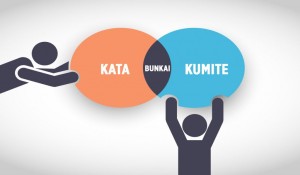
Is bunkai really necessary? No. If you are studying Karate simply to get in shape or perform kata in tournaments, bunkai is not necessary.
As well, bunkai is not necessary for students interested in kumite or sparring. Because only the most basic applications are permitted in kumite (blocks, a few strikes, etc). There is no pulling hair, poking eyes, twisting joints, choking, throwing, kicking the groin, etc. Which are all techniques found in kata.
Kumite with rules limits the fight to sport. Kata without bunkai is more like a dance. In a self-defense situation if one can only kick, punch and block, Karate might not offer much advantage over a larger and stronger person. But that field is a little more balanced if you can strike that person in the groin or eyes, or perhaps break an elbow joint or strike to the throat. Through study of bunkai kata actually be used for self-defense.
I believe there are many reasons why there is less emphasis on kata, through the evolution of karate. Most notably was Funakoshi Sensei having karate become part of school curriculum, where teachers taught hundreds of students, instead of a handful as in history. Plus the advent of competition.
For me, both are important. Kata is a catalog of techniques and applications of those techniques and like Sensei always emphasizes, Kata teaches the coordination of movements, balance, timing, flow from one stance or technique to another. It teaches proper breathing, thus proper muscle control.
The kata must always be practiced correctly. Real combat is another matter. – Gichin Funakoshi
Kata trains the mind on a conscious and sub-conscious level, and will help at keeping you feeling young and vital.
Kumite is essential to being able to fight because it offers a way to test techniques, timing, distance, angles, speed, power, …etc. It allows you to test your techniques in a 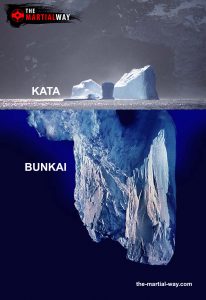 controlled situation, for safety, yet comes as close to actual fighting as can be done without someone being seriously injured or killed.
controlled situation, for safety, yet comes as close to actual fighting as can be done without someone being seriously injured or killed.
As long as there are rules of any kind, and those fighting are not trying to kill their opponent, or be killed by him, it is not self-defense.
Which ever way you lean, or which ever way your philosophy goes, I believe we are lucky to be studying a martial art that allows you to take the direction you want. A style with a lifetime’s knowledge to learn.
